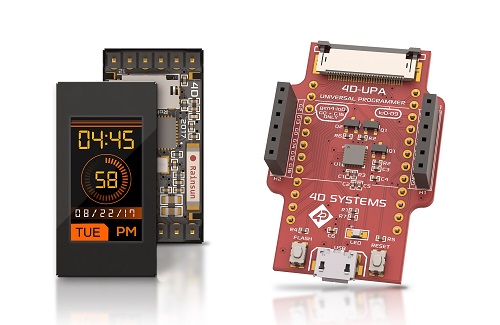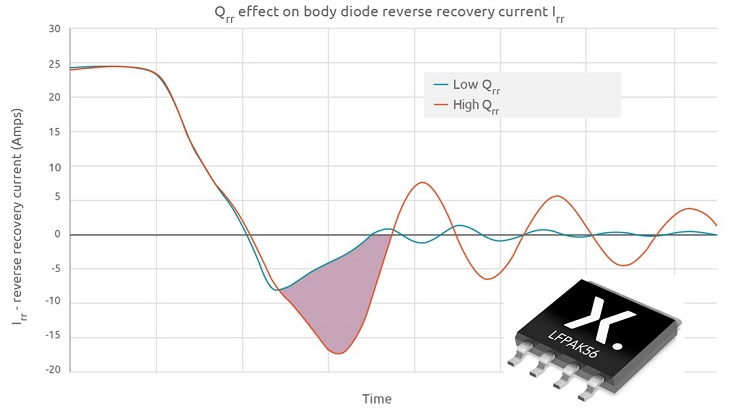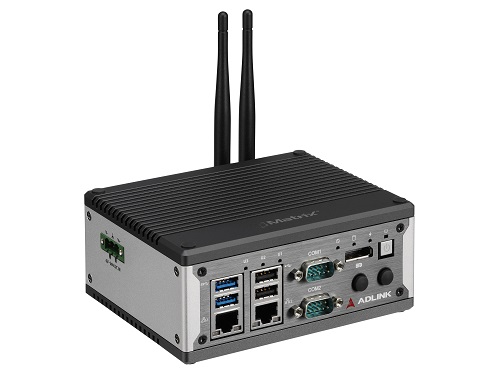By Alix Paultre, contributing editor
The most notable thing about Embedded World, the leading international exhibition for embedded technology, is the buzz of activity everywhere. The bringing together of engineers, ideas, and technology makes for an exciting and busy event. In its 16-year existence, Embedded World has provided a place where the world’s engineering community can come together and work on solutions for things both great and small.

Larger yet again in 2018, the show brought together over 1,000 companies in six exhibition halls to show their wares to over 32,000 visitors from 78 countries. The event’s associated conferences also demonstrated the vibrancy of the industry with 2,176 participants and speakers from 52 countries. This combined effort to show, educate, entertain, and create an environment to exchange ideas and solutions makes the show a must-see for any company serious about participating in the embedded engineering space.
In the buzz, many application areas were discussed — from automotive to the smart home to intelligent medical devices to Industry 4.0. All of these application spaces are expected to eventually all connect in the cloud as part of the IoT, and the exhibition floor is where that reality is being created. Solutions both wired and wireless were presented to automate and integrate all aspects of society that involve powered systems.
This final integration of all powered devices into the IoT is the true “final mile,” as even legacy technology is brought into the fold using methodologies from multi-protocol wireless devices that can talk to sub-gigahertz proprietary systems to wired devices that can completely replace the older systems in place. This final integration of all powered devices will further increase the ability to communicate, coordinate, and operate in better and more useful ways.
4D Systems
One thing that people expect from an intelligent system is a control screen everywhere that input is needed. 4D Systems is serving that need with its Internet of Display modules, and their 0.9-in. WiFi-enabled IoD-09 series of 80 x 160 TFT LCD displays can display full color images, animations, and icons. The new modules come in two variants: through-hole (IoD-09TH) and surface-mount (IoD-09SM).

The module is designed around the ESP8266 system-on-Chip (SoC) from Espressif. It comes with 802.11 b/g/e/i support as well as WPA/WPA2, WEP/TKIP/AES, and STA/AP/STA+AP/P2P operational mode support. There are six GPIOs available allowing digital input/output as well as various communication protocols. Available interfaces include SPI, I2 C, UART, and one-wire communications. A micro-SD slot allows the use of off-the-shelf high-capacity memory cards from 4 GB to a maximum of 32 GB. FAT16 and FAT32 file accesses are supported. The module also comes with 4 Mbit of flash memory and 128 Kb of SRAM (80 Kb available for the user).
The IoD-09 can be programmed with the 4D Systems Workshop4 integrated development environment (IDE) or through the Arduino IDE. Workshop4 provides powerful graphics using the GFXdloIoD09 graphics library specifically for the IoD-09 series through a drag-and-drop-style graphical user interface (GUI). The IoD-09 Starter Kit comes with an IoD display module, 4D-UPA programmer, and a 4-GB micro-SD card.
Lattice Semiconductor
Part of the effort to drive continued adoption of 60-GHz wireless technology, Lattice Semiconductor expanded its Lattice Snap wireless connector product family, based on SiBEAM 60-GHz technology, to enable manufacturers to easily integrate short-range, high-speed 60-GHz wireless links into their products. To simplify the design process further, Lattice included the Snap modules, which are compliant with regulatory requirements in several jurisdictions, in their Snap evaluation kit for fast prototyping and time-to-market.
The Snap modules offer 12-Gbps full-duplex bandwidth at sub-frame latencies, making this technology ideal for the replacement of physical connectors, such as USB. By eliminating the connector, the industrial designs of new products can be optimized by making them thinner, lighter, and environment-proof, all while maintaining a robust and high-speed connection.
Key features of the Snap modules include fully-integrated power regulation, timing, 60-GHz antenna design, and regulatory compliance.
Nexperia
With the demands being placed on power systems and the growing competition from wide-bandgap devices, the pressure is on silicon to rise to the challenge. With that in mind, Nexperia , the former Standard Products division of NXP, released the NextPower 100-V family of power MOSFETs with a low reverse recovery charge (Qrr) and parts that are qualified to 175°C in the LFPAK56 (PowerSO8) package.

Recommended for high-efficiency switching and high-reliability applications, the devices have 50% lower RDS(on) and a strong avalanche energy rating and feature low body diode losses with Qrr down to 50 nC, resulting in lower reverse recovery current (IRR), lower voltage spikes (Vpeak), and reduced ringing, which allows for further optimised dead-time.
The new NextPower 100-V MOSFETs are available in three packages: TO220 and I2PAK through-hole devices and the widely acclaimed LFPAK56 package (SMT). All package variants feature Tj(max) of 175°C and fully meet the extended temperature requirements of IPC9592, making NextPower 100-V MOSFETs especially suitable for telecom and computing applications.
ADLINK
Of course, you can’t have an IoT without an intelligent infrastructure using secure and robust platforms, preferably with a minimal footprint. ADLINK Technology introduced an industrial IoT-ready combination embedded controller and IoT gateway. The MXE-210 offers a small footprint and is fully operable in harsh environments from –40°C to 85°C, making it an ideal choice for industrial automation, transportation, agriculture/aquaculture, and smart city applications.

Functioning as both a gateway and embedded controller, the MXE-210 bridges the gap between operations technology (OT) and information technology (IT) data interchanges, with support for third-party manufacturers via industry-standard compliances. Support is included for Modbus, EtherCAT, DDS, MQTT, and CANOpen by Vortex Edge Connect, as well as Wi-Fi, BT, LoRa, 3G, and 4G LTE for data communication and wireless connectivity. As a controller, the MXE-210 leverages the same protocols to directly communicate with and manage any standard industrial device.
The MXE-210 gateway’s single embedded SIM (e-SIM) automatically switches between regional networks, enabling a more secure and robust alternative to multiple SIM cards currently to deliver data as rolling stock moves between regions. The pre-installed e-SIM also eliminates time spent swapping out installed SIM cards. The MXE-210 Series further supports a wide range of comprehensive security measures, providing protection from the inside out with the benefits of TPM 2.0, Intel Boot Guard, and UEFI Secured Boot.
In addition, the MXE-210 comes equipped with an Intel Atom x7-E3950/x5-E3930 processor, one DisplayPort, two USB 2.0 ports, two USB 3.0 ports, two GbE ports, two COM ports (RS232/422/485), two mPCIe slots, one USIM slot, one mSATA, one SATA-III, one micro-SD slot, and support for DIN-rails and wall-mounting. Optional extras include audio mic-in, line-out support, eight isolated DIs with interrupt and eight isolated DOs, and two additional COM ports (RS232/422/485).
Silicon Labs
Wireless IoT devices can’t properly serve their applications if the battery is dead from inefficient operation. Silicon Labs introduced a new Wi-Fi portfolio to simplify the design of power-sensitive, battery-operated Wi-Fi products such as IP security cameras, point-of-sale terminals, and consumer healthcare devices. Optimized for exceptional energy efficiency, the WF200 transceivers and WFM200 modules support 2.4-GHz 802.11 b/g/n Wi-Fi.
Developers can speed time-to-market and miniaturize battery-operated Wi-Fi products with the WFM200, the world’s smallest pre-certified system-in-package (SiP) module with an integrated antenna. Silicon Labs’ WF200 transceiver provides a cost-effective option for high-volume applications with the flexibility to meet unique system design requirements, such as external antennas.
Benefits include low transmit (TX: 138 mA) and receive (RX: 48 mA) power, 200-µA average Wi-Fi power consumption (DTIM = 3), and a link budget of 115 dBm for long-range Wi-Fi transmissions. The 4 x 4-mm QFN32 transceiver and 6.5 x 6.5-mm LGA52 SiP module exhibit excellent antenna diversity and wireless coexistence in crowded 2.4-GHz environments.
Advertisement
Learn more about Electronic Products Magazine





